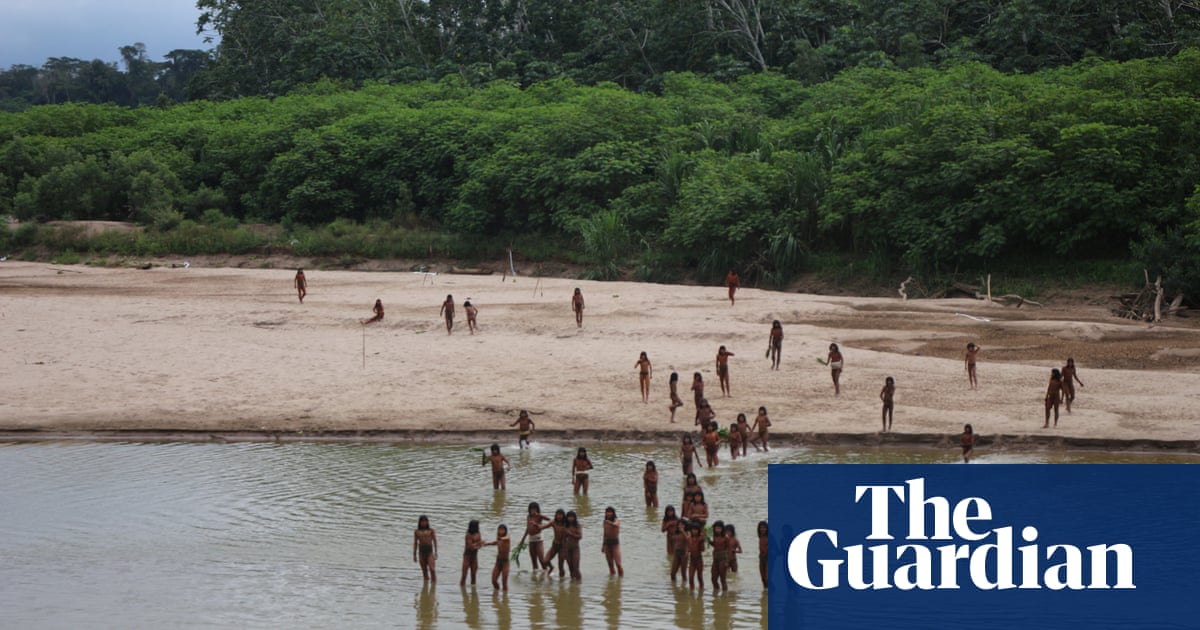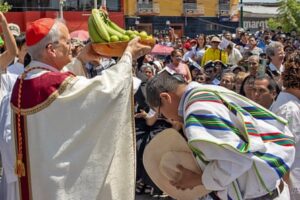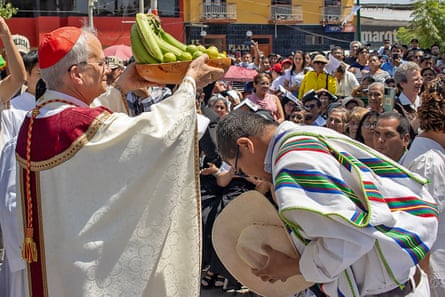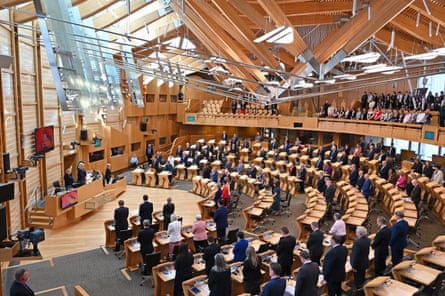
At least two loggers have been shot dead with arrows, one has been injured and two more are missing after a confrontation with members of the “uncontacted” Mashco Piro people in the Peruvian Amazon, according to Indigenous activists who have criticised the government for failing to formally recognise and protect all of the isolated people’s territory.
The deadly attack, which occurred last Thursday but was made known only this week, took place a day before the Forest Stewardship Council (FSC) suspended for eight months the sustainability certification of a logging company that campaigners have accused of encroaching on the fiercely territorial Indigenous group’s ancestral land.
Peruvian Amazon Indigenous groups and the NGO Survival International have demanded the FSC – an international NGO that certifies whether timber extraction is sustainable and ethical – permanently cancel its certification of the Canales Tahuamanu timber concession, which borders the reserve where the isolated Indigenous group live.
Eusebio Ríos, the vice-president of the regional Indigenous federation Fenamad, which makes up 39 Indigenous groups in Peru’s Madre de Dios and Cusco regions, said on Tuesday: “There are people wounded, dead, missing – we don’t know what’s happening or what has happened.”
He called for timber workers to be evacuated from the area after the confrontation, and added: “Fenamad has been demanding for a long time that this territory be properly protected for uncontacted peoples.”
The attack happened near the Pariamanu River in Madre de Dios province in an area of the Mashco Piro’s ancestral territory that is now within a logging concession.
It follows a similar attack in August in the same area, in which at least one logger was wounded and another incident in 2022, when a logger was killed by arrows and another was injured.
Caroline Pearce, the executive director of Survival International, said: “This is a tragedy that was entirely avoidable. The Peruvian authorities have known for years that this area that they chose to sell off for logging was actually the Mashco Piro’s territory.
“By facilitating the logging and destruction of this rainforest they’re not only endangering the very survival of the Mashco Piro people, who are incredibly vulnerable to epidemics of disease brought in by outsiders, but they’ve knowingly put the lives of the logging workers in danger,” she added.
Peru’s ministry of culture, which is responsible for Indigenous rights, said in a statement that it was investigating the reports and coordinating with the local prosecutor’s office and police to deploy a helicopter to the area where the incident took place.
In a statement on Friday, the FSC said: “Recent developments have heightened concerns regarding the potential risks to the Mashco Piro’s safety and wellbeing”.
In 2002, the 829,941-hectare (2m acres) Madre de Dios territorial reserve was created in Peru’s south-eastern Amazon for the Mashco Piro to live in but the semi-nomadic people’s ancestral territory extends beyond its borders into rainforest that is rich in cedar and mahogany where timber companies have been given logging concessions.
In 2015, Peru’s culture ministry proposed upgrading the protected area in Madre de Dios from a territorial reserve to an Indigenous reserve, as well as expanding its borders to reflect the true extent of the Mashco Piro territory but faced strong opposition from logging interests.
The move would have changed its legal status, expanded its borders to include timber concessions, and prohibited logging activity. It was approved by a multisectorial commission in 2016, but inexplicably the new status was not sealed by a presidential decree.
Campaigners have said the Mashco Piro, thought to number more than 750 people, could be the world’s largest “uncontacted” group, though Peru’s culture ministry holds a more conservative estimate of about 400 members. Peru has 25 Indigenous groups living in isolation or initial contact, the second-highest number in the Amazon, after Brazil.
Source: theguardian.com


















